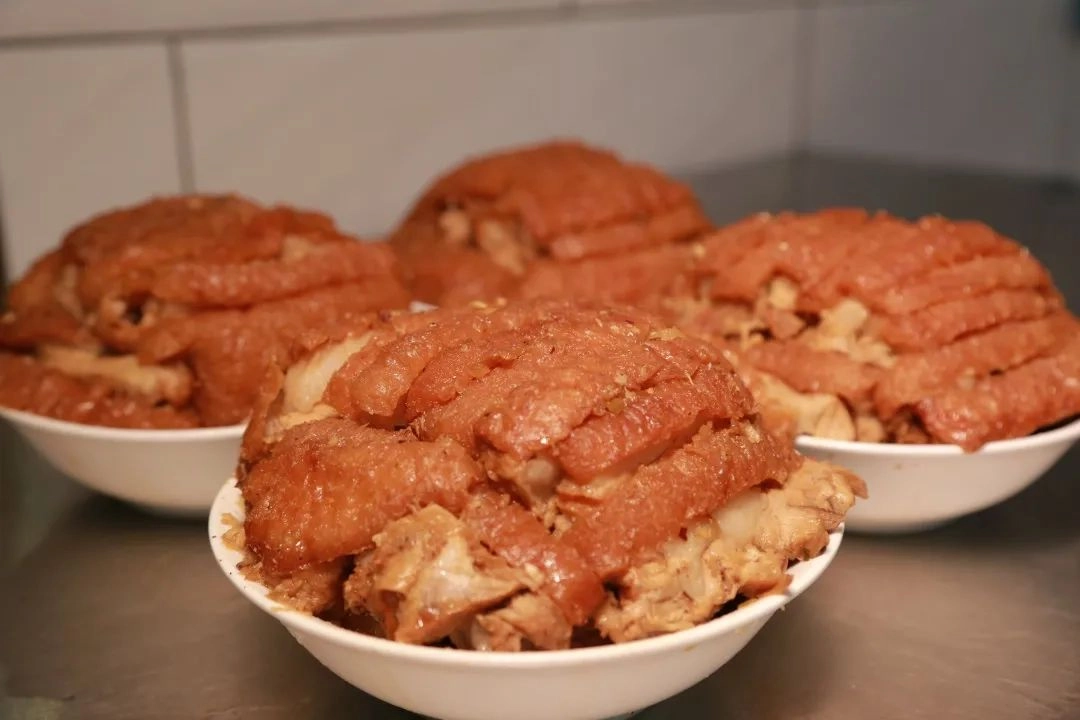広州のQianjiang Kourouの料理の喜びを発見します
食品愛好家および開業医として, 私はあなたとあなたと一緒にQuianjiangkourouである絶妙な料理の宝石を共有することに興奮しています, a traditional dish from Laibin City in the Guangxi Zhuang Autonomous Region of China. この料理はただの食事ではありません; it’s a cultural experience that reflects the rich history and culinary prowess of the region.
起源と文化的背景:
Qianjiang Kourou has its roots deeply embedded in the rural cuisine of Guangxi. 代々受け継がれてきた一品です, with each family adding their own unique touch to the recipe. The dish is particularly popular during festivals and family gatherings, 豊かさと繁栄を象徴する. The Zhuang people, who are the predominant ethnic group in Guangxi, have a deep connection with nature and agriculture, which is reflected in their cuisine that often features locally sourced ingredients.
材料と準備:
The star of Qianjiang Kourou is the succulent pork belly, として知られています “five-layer pork” due to its distinct layers of fat and lean meat. This is paired with the starchy, velvety texture of taro, which is a staple in Guangxi cuisine. The preparation involves slicing the pork belly into thin, even pieces and then layering them with slices of taro. The dish is then steamed to perfection, allowing the flavors to meld and the textures to complement each other.
味と食感:
The result is a symphony of flavors and textures. 豚バラ肉, when cooked properly, becomes tender and juicy, with the fat rendering down to create a rich, savory broth that infuses the taro. タロイモ, in turn, absorbs the pork’s essence, becoming soft and almost creamy while maintaining a subtle sweetness. Each bite is a harmonious blend of the pork’s savory depth and the taro’s earthy sweetness.
視覚的な説明:
視覚的に, Qianjiang Kourou is a feast for the eyes. The dish is often presented with the layers of pork and taro alternating, creating a striking pattern that is both visually appealing and indicative of the dish’s layered flavors. The pork slices, glistening with the cooking juices, contrast beautifully with the smooth, mottled surface of the taro. A sprinkling of green onions or coriander adds a pop of color, while a drizzle of dark soy sauce gives it a glossy sheen.
代表的な料理と料理:
Qianjiang Kourou can be served as a standalone dish or as part of a larger feast. It pairs well with steamed rice, which absorbs the rich sauce, or with a side of pickled vegetables for a tangy contrast. The dish is also often accompanied by a light broth or soup to cleanse the palate between bites.
料理の特性:
The beauty of Qianjiang Kourou lies in its simplicity and the depth of flavor that comes from the careful combination of a few key ingredients. The dish is a testament to the slow-cooked, rustic style of cooking that is characteristic of Guangxi cuisine. It is a dish that requires patience and skill, as the steaming process must be monitored to ensure that the pork and taro cook evenly without overcooking.
結論は, Qianjiang Kourou is more than just a dish; it is a culinary journey through the heart of Guangxi, offering a taste of tradition and a glimpse into the region’s rich culinary heritage. Whether you are a food enthusiast or simply someone seeking a new culinary adventure, Qianjiang Kourou is a must-try dish that will leave a lasting impression on your taste buds.
